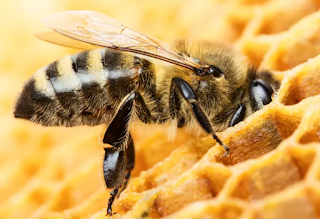Unraveling the Sweet Truth: The Art of Honey Production
Honey, a globally cherished delight, often falls victim to the misconception of being nothing more than bee vomit. Let's unravel the intricate process behind honey production, dispelling myths and shedding light on the fascinating world of these industrious honey bees.
#HoneyProduction #BeeFacts #NutritionMyths #BeekeepingInsights #NatureWonders
Introduction: Beyond the Buzz – Debunking Myths
Despite its widespread consumption, honey's origins often spark curiosity and sometimes misconceptions. Contrary to the belief that it's bee vomit, honey is a meticulously crafted substance, showcasing the genius of honey bees.
The Buzzing Bee Facts: Nectar to Honey
Among the 20,000 bee species globally, only a small percentage produces honey. These honey-producing bees collect nectar from flowers, a sugary energy source for their flights and hive activities. Nectar, upon reaching the hive, undergoes a transformation into honey, a concoction of at least 181 components, with 80% sugar and 15% water being its primary composition.
Honey Sac and the Art of Trophallaxis
The process of honey creation unfolds within the bee's honey sac, a specialized organ separate from its primary food stomach. The nectar, stored in this sac, undergoes trophallaxis, a regurgitation process. It is then blended with sugar-inverting enzymes to create the golden syrup we love. This honey is stored in honeycombs, serving as sustenance for both adult and larval bees.
Royal Jelly: Nature's Nutrient Boost
In addition to honey, bees produce royal jelly, a highly nutritious substance nurturing queen bee larvae and providing vital nutrients to worker and drone larvae. Contrary to popular beliefs, the combination of honey and royal jelly, marketed as "royal honey," lacks scientific backing for claims of being a potent aphrodisiac.
Dispelling Myths: A Sweet Conclusion
While the terms like "stomach secretions" might raise eyebrows, it's essential to appreciate the distinct separation of the honey sac from the bee's primary digestive system. Let's refrain from mislabeling honey as vomit and instead marvel at the fascinating process that brings this golden elixir to our tables. And remember, royal honey won't grant you prowess in the bedroom—it's just a delightful concoction from nature.
#SweetTruth, #HoneyMyths, #BeeFacts, #NutritionalWonders, #BeeWisdom
Frequently Asked Questions (FAQ):
Q: Is honey really bee vomit?
- A: No, honey is not vomit; it is a carefully crafted substance produced by honey bees through a meticulous process.
Q: How is honey created from nectar?
- A: Nectar collected by honey bees undergoes a process in the honey sac, separate from the food stomach, through trophallaxis and the addition of sugar-inverting enzymes, resulting in the creation of honey.
Q: What is royal jelly, and what is its purpose?
- A: Royal jelly is a highly nutritious substance produced by worker bees to feed queen bee larvae and provide essential nutrients to worker and drone larvae.
Q: Is "royal honey" backed by scientific evidence as an aphrodisiac?
- A: No, claims of "royal honey" being a powerful aphrodisiac lack scientific substantiation.
Q: How should we view the process of honey creation without misconceptions?
- A: It's crucial to appreciate the separation of the honey sac from the bee's primary digestive system and refrain from mislabeling honey as vomit, acknowledging the intricate process behind its creation.

